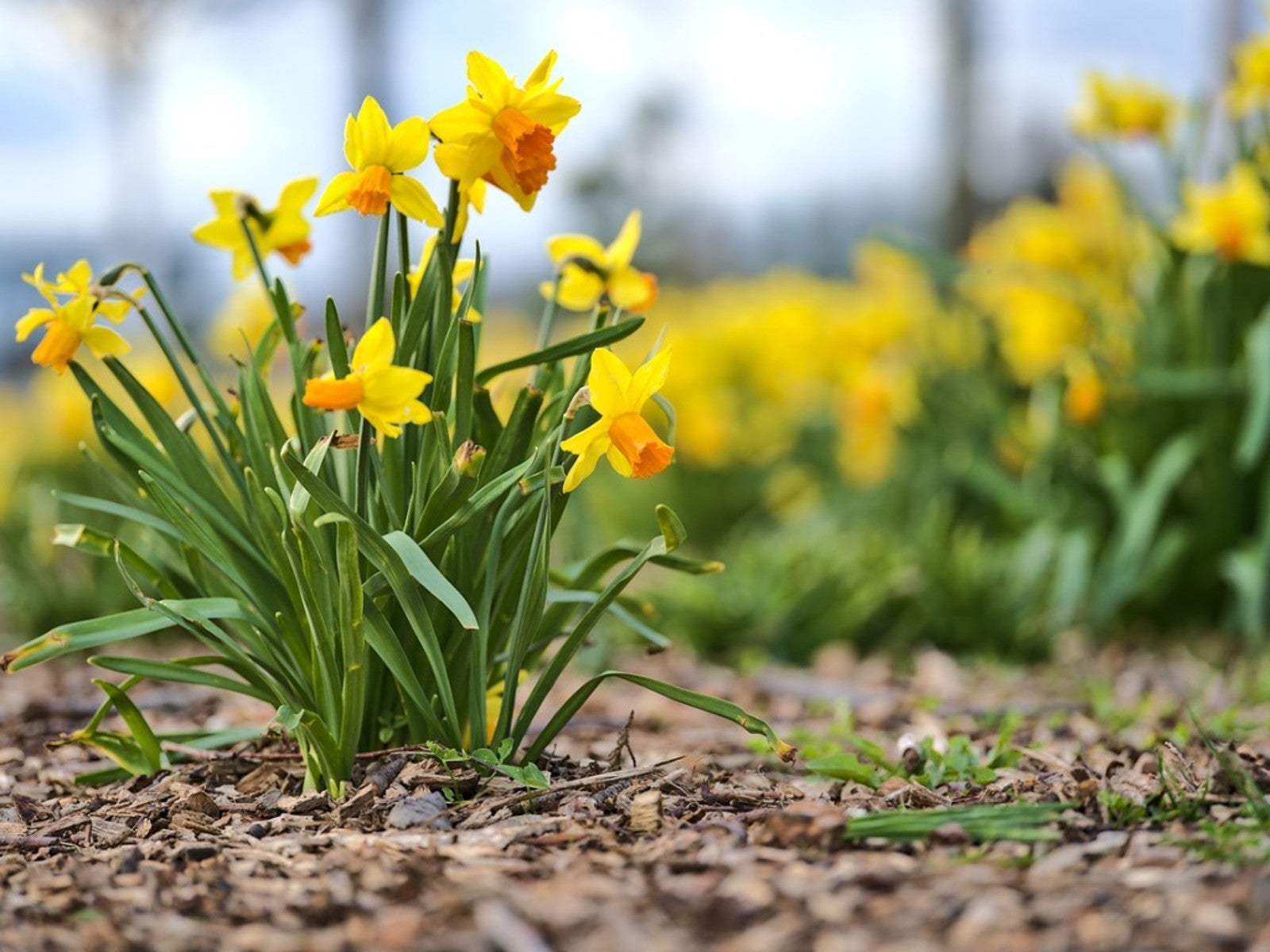Why Planting Daffodil Bulbs Late Could Delay Blooms

The plan was to plant daffodil bulbs in the fall but torrential rain followed by a cold snap has left the bulbs unplanted. The question now is how late can you plant daffodil bulbs? If you plant them in winter, even though it is late, do you end up with late blooming daffodils or daffodils that are not flowering? Read on to learn about daffodil bloom time and when to plant daffodils.
When to Plant Daffodils?
Daffodils are supposed to be planted in the fall. There are two reasons for this. The first is that spring flowering bulbs need a chilling period of about 10 to 13 weeks at temperatures below 40 degrees F. (4 C.) for blooming to commence. The other reason is the bulbs need time to grow roots that will support the growth of foliage and flowers. What happens if the above scenario occurs? Should you still plant the bulbs late and if so will they bloom in the spring?
How Late Can you Plant Daffodil Bulbs?
If fall is waning and you still haven’t gotten the daffodils in the ground you have two options. Option one is to go ahead and plant them as soon as you can even if you have to chip partially frozen soil up. If the garden soil isn’t an option plant the bulbs in a pot.
Will these late planted bulbs grow? Chances are good that they will, however, they may not bloom or if they do, the blossoms might be punky. In fact, the entire plant may be less than robust simply because it hasn’t had enough time to grow sufficient roots to support further growth of foliage and flowers.
The late planted daffodils may not flower at all but they may go on to flower beautifully the successive year after they’ve built up a root system and stored energy for flower production.
Either way it is still best to get the bulbs in soil since they will begin to lose some of their food reserves if left unplanted in a natural process of respiration.
Another Option for Unplanted Daffodil Bulbs
Yet another option for spring bulbs that haven’t made it into the ground in the fall is to hasten daffodil bloom time. Plant the bulbs inside and force them as container plantings. Remember though the bulbs still need to go through a chilling period of up to 13 weeks to initiate blooming.
Gardening tips, videos, info and more delivered right to your inbox!
Sign up for the Gardening Know How newsletter today and receive a free copy of our e-book "How to Grow Delicious Tomatoes".
Plant your bulbs in a light potting soil with the tips of the bulbs just above the soil. Moisten the bulbs and move the containers to an unheated garage or other cool, protected area or a refrigerator; somewhere that temperatures are 40 degrees F. (4 C.).
When the 10 to 13 weeks of chilling have elapsed, bring the potted bulbs into an area of about 65 to 70 degrees F. (18-21 C.). Blooms should begin forming within a week to two weeks.
Lastly, some gardeners have succeeded in planting forced bulbs outside after their blooms fade. The key here is to keep the foliage healthy by providing the plant with plenty of light and moderate fertilizer and water.
In this case even if the bulbs don’t bloom again, you’ve saved them from the compost bin and got to see at least one forced bloom.

Amy Grant has been gardening for 30 years and writing for 15. A professional chef and caterer, Amy's area of expertise is culinary gardening.
-
 8 Perfect Flowers To Plant With Tomatoes To Boost Yields & Banish Pests
8 Perfect Flowers To Plant With Tomatoes To Boost Yields & Banish PestsDon’t forget flowers when choosing companion plants for your tomato beds or pots. These pretty, fragrant flowers add beauty but are also highly beneficial.
By Mary Ellen Ellis
-
 Want The Longest Lasting Hydrangea Flowers? Grow These 8 Panicle Hydrangea Varieties
Want The Longest Lasting Hydrangea Flowers? Grow These 8 Panicle Hydrangea VarietiesFor ornamental shrubs that deliver the longest flowering seasons with plush blooms and delicate hues, these panicle hydrangea varieties are essential in your yard
By Tonya Barnett